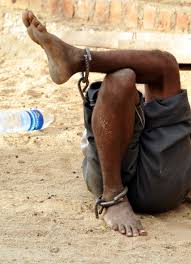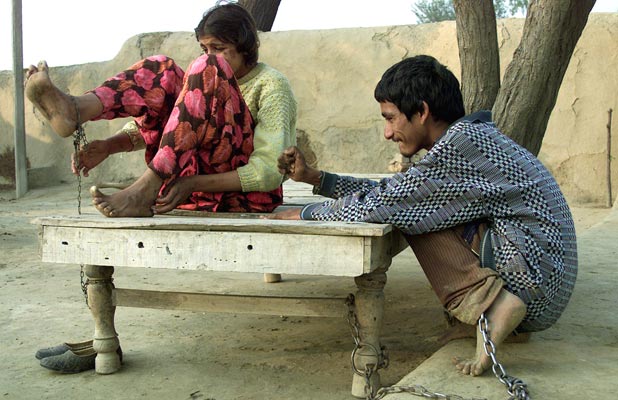
(9-21-16) This is the second in a three part series that I am writing about my recent trip to India to speak about mental health reform.
Mental health services in India are scarce and living conditions for many of those who are ill often border on being barbaric. This is especially true for women and children who find themselves homeless and abandoned on the streets or confined in facilities where restraints are commonly used and physical and sexual abuses are all too common.
During my short visit to Chennai for the three day summit, I wasn’t able to do much except visit a handful of local facilities and listen to personal stories that I later augmented with articles and news reports. Everyone readily admitted to me that India faces incredible challenges. Much of the problem is because of scale. India has a population of 1.3 billion, has more than two thousand different ethnic groups, and has two nationally recognized languages. Some 58% of its residents earn less than $3 per day, putting them under worldwide poverty guidelines.
As is true in other nations, serious mental illnesses – such as schizophrenia and bipolar disorder – are thought to be prevalent in seven percent of the population. In India that translates to multi-millions, yet there are only an estimated 40,000 mental health beds nationally in government and private hospitals. The widespread poverty in India causes high numbers of other mental disorders such as anxiety and depression. In the past decade, suicides have jumped 22 percent. It’s estimated that only one in four Indians have access to any sort of psychiatric care, and that is strictly among the middle and wealthy class. In India, insurance companies do not pay for psychiatric care.
For the poor, there are little or no services and stories of abuse and neglect routinely surface. In 2001, a fire at a mental facility killed 26 persons who were burned alive chained to their beds. More recently, a children’s hospital came under public criticism when it was revealed that guards were knocking out the youngsters’ teeth so that they could better perform oral sex on the staff. Between 2010 and 2013, as many as 84 patients died in a single state-run mental hospital in one Indian state. All were thought to have curable illnesses but they died because of abuse, communicable diseases contracted in the mental hospital, poor sanitation, malnutrition, and lack of treatment.
In addition to a scandalous bed shortage, there is an equally shocking shortage of psychiatrists. Many Indian medical schools do not include psychiatry in their courses because of stigma against the profession. The number of psychiatrists recently was estimated to be about 6,000 in the entire nation.
In 2007, India ratified the United Nations Convention on the Rights of Persons with Disabilities, which calls for a transition from institutions to community based care. But in a nation with such a dearth of services, there is disagreement over whether community based care is actually better than constructing more hospital beds. (Sound familiar?)
In a recent article, Dr. Sanjeev Jain, a professor of psychiatry at India’s National Institute of Mental Health and Neurosciences, the nation’s leading research branch, argued in favor of more state institutions.
“China has built five hundred new mental hospitals in the last ten years. We aspire to be like the Chinese in many things except for psychiatric care, so there is a peculiar dissonance in this reluctance of the government to actually emulate these models. Why is it that we do not realize that institutions are necessary? Can’t we build an institution where people with mental illness are given affordable housing, care, a protected environment, some entertainment?”
A new bill of rights for persons is being discussed in India for persons with mental disorders. It would decriminalize suicide and instead require those who attempt it to get treatment rather than being jailed. It would make it illegal to arrest, jail or imprison someone simply because they had a mental illness. It would ban the use of ECT (electroconvulsive therapy) on children and forbid administering shock treatments on adults without the use of muscle relaxants and anesthesia. The new law would require facilities that house and treat persons with mental illnesses to register with the government, in an attempt, to set some sort of standard of care. The bill would require insurance companies to pay for mental health treatment and it would require hospitals to open mental wards and treat mental disorders the same as physical ones.
These are lofty goals that on paper look great. But actually getting them off paper and making them a reality will be an immense undertaking.
As in the U.S., stigma is a major problem and that includes doctors looking down on psychiatrists as being lesser in importance and education, and politicians arguing that mental illnesses are not medical conditions but rather defects in character or, in some cases, punishment by gods and spirits for immoral acts. Stigma within families remains a major problem magnified by ignorance and poverty. It is not uncommon for families to expel members who become mentally ill, including parents with dementia. Nor is it uncommon for families to keep their ill members in shackles to prevent them from roaming.
In an account published in the magazine, Frontline, writers Radhika Alkazi and Amba Salelkar described the plight of Kuku Didi who they found in southern India. Didi used to live with her family but when her husband died, she became depressed, and her son with his wife insisted that there was no space in the house for her unless she contributed to the running of the household. Forced out onto the street, she survived by going through trash in search of recyclable materials which she sold, earning about 30 rupees a day (45 cents per day), which was enough to feed herself but not enough to contribute to the family. The story quotes Didi telling the authors that “People are worse than animals.”
In my discussions at the summit, there was one conversation about how persons with mental illnesses are being treated in the U.S. as compared to India that proved surprising. My hosts were mystified when I told them that churches in the U.S. didn’t routinely keep their doors open at night so that homeless persons with mental illnesses could sleep inside. In India, which is 80% Hindu, many temples allow the homeless to sleep and stay inside them. Some Indians with mental disorders believe staying in a temple for thirty days can help cure them.
“How can a deity turn his back on such people?” one summit attendee asked me.

Brother and sister with mental illness chained outside family house.
(Friday– the amazing and hopeful story of Vandana Gopikumar and the Banyan who are bringing hope to India’s homeless and mentally ill women in Chennai.)



